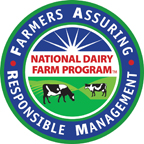As negotiations continue on a Trans-Pacific Partnership (TPP) trade agreement linking the U.S. with a number of major countries, NMPF is in the process of building support in the House of Representatives for a letter to the U.S. Department of Agriculture (USDA) and the U.S. Trade Representative (USTR).
The letter stresses the importance of a positive dairy outcome in the TPP talks and is similar to a letter already sent from the Senate to the two federal agencies working on the negotiations. The key requests include:
- Fully opening the Canadian and Japanese dairy markets to U.S. products, given the considerable potential in both countries for significantly higher U.S. dairy exports;
- Meaningful reform in New Zealand to address the harm that its policy of encouraging near-monopolistic market concentration has had on our exporters;
- Enforceable TPP sanitary and phytosanitary provisions that build upon existing international standards in order to uphold strong, science-based U.S. food, animal and plant standards, while reducing the unjustified barriers facing U.S. agricultural exports.
The lead authors of the letter are the eight co-chairs of the House Dairy Farmer Caucus. The letter will be sent later this month to USDA and USTR.
At the same time, the Consortium for Common Food Names (CCFN) is currently working with Central American companies and governments to register opposition to several European Geographic Indications applications for cheese. The U.S. ships a wide variety of cheese to these countries, and NMPF and the CCFN want to ensure that American exporters can continue to do so, in the face of efforts by the European Union to restrict the sales of common cheeses to only those produced in Europe.

 Immigration continues to dominate the dialogue on Capitol Hill, with significant action occurring in both the House and Senate over the past few weeks. On June 26th, the full Senate voted 68-32 to approve, S. 744, the Border Security, Economic Opportunity, and Immigration Modernization Act. This comprehensive immigration reform measure included the agreement reached between the
Immigration continues to dominate the dialogue on Capitol Hill, with significant action occurring in both the House and Senate over the past few weeks. On June 26th, the full Senate voted 68-32 to approve, S. 744, the Border Security, Economic Opportunity, and Immigration Modernization Act. This comprehensive immigration reform measure included the agreement reached between the  The startling House defeat of the 2013 farm bill has further complicated an already murky process of trying, for the second time in 12 months, to pass a new farm bill on Capitol Hill. Leaders in the House are contemplating a new plan this week – involving separating farm programs from the nutrition ones – following the stunning rejection of the farm bill June 20th.
The startling House defeat of the 2013 farm bill has further complicated an already murky process of trying, for the second time in 12 months, to pass a new farm bill on Capitol Hill. Leaders in the House are contemplating a new plan this week – involving separating farm programs from the nutrition ones – following the stunning rejection of the farm bill June 20th.




